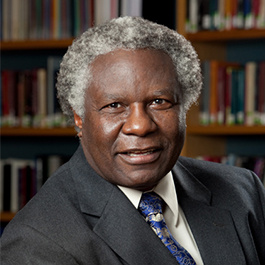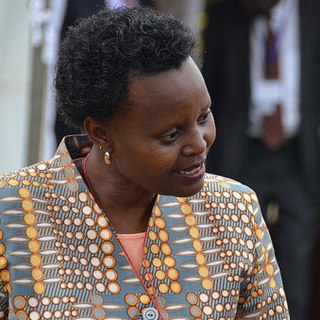
Biotechnology is a multidisciplinary field that involves the integration of natural sciences and engineering sciences in order to achieve the application of organisms, cells, parts thereof and molecular analogues for products and services.
Sirindhorn International Institute of Technology (SIIT) is a semi-autonomous institute of technology established in 1992 within Thammasat University. It is located in Pathum Thani, Thailand. One of Thailand's research universities, it offers science, technology and engineering education, as well as related management programs. All are international programs, with English language as a medium of instruction. The institute is part of the Links to Asia by Organizing Traineeship and Student Exchange network, an international consortium of universities in Europe and Asia.

Thailand Science Park (TSP) is in Tha Khlong, Khlong Luang District, Pathum Thani Province near Rangsit, north of Bangkok. Managed by the National Science and Technology Development Agency (NSTDA), under the Ministry of Higher Education, Science, Research and Innovation. Thailand Science Park was set up in 2002. TSP is part of Thailand's efforts to strengthen its capabilities in research and innovation. It is the country's largest science and technology research park.

The National Science and Technology Development Agency (NSTDA) is an agency of the government of Thailand which supports research in science and technology and its application in the Thai economy.

Cochin University of Science and Technology (CUSAT) is a state government-owned autonomous university in Kochi, Kerala, India. It was founded in 1971 and has three campuses: two in Kochi and one in Kuttanad, Alappuzha, 66 km (41 mi) inland. The university awards degrees in engineering and science at the undergraduate, postgraduate and doctoral levels.
Diamond v. Chakrabarty, 447 U.S. 303 (1980), was a United States Supreme Court case dealing with whether living organisms can be patented. Writing for a five-justice majority, Chief Justice Warren E. Burger held that human-made bacteria could be patented under the patent laws of the United States because such an invention constituted a "manufacture" or "composition of matter". Justice William J. Brennan Jr., along with Justices Byron White, Thurgood Marshall, and Lewis F. Powell Jr., dissented from the Court's ruling, arguing that because Congress had not expressly authorized the patenting of biological organisms, the Court should not extend patent law to cover them.

King Mongkut's Institute of Technology Ladkrabang is a research and educational institution in Thailand. It is situated in Lat Krabang District, Bangkok approximately 30 km east of the city center. The university consists of nine faculties: engineering, architecture, science, industrial education and technology, agricultural technology, information technology, food industry, liberal arts, and medicine.

Calestous Juma was a Kenyan scientist and academic, specializing in sustainable development. He was named one of the most influential 100 Africans in 2012, 2013 and 2014 by the New African magazine. He was Professor of the Practice of International Development and Faculty Chair of the Innovation for Economic Development Executive Program at Harvard Kennedy School. Juma was Director of the School's Science, Technology and Globalization Project at Harvard Kennedy School as well as the Agricultural Innovation in Africa Project funded by the Bill and Melinda Gates Foundation. His last book, Innovation and Its Enemies: Why People Resist New Technologies, was published by Oxford University Press in 2016.

Atma Jaya Catholic University of Indonesia (also known as "Atma Jaya University" or "Atma Jaya"; Indonesian: Universitas Katolik Indonesia Atma Jaya or abbreviated as Unika Atma Jaya) is an institute of higher learning in Jakarta, Indonesia, which was founded by Atma Jaya Foundation on 1 June 1960. Atma Jaya has three campuses in Jakarta Metropolitan Area, in which the main campus is located in Semanggi, South Jakarta. The second campus, the center for health development, is located in Pluit, North Jakarta, next to its teaching hospital, Atma Jaya Hospital. The new campus is located in Tangerang, Banten, and is planned to be the main campus for undergraduate students.
The Institute on Biotechnology and the Human Future (IBHF) is an affiliate of the Illinois Institute of Technology (IIT) and is housed at IIT's Chicago-Kent College of Law. The IBHF was founded in 2004 by Lori Andrews, J.D., and Nigel M. de S. Cameron, Ph.D., to discuss and analyze the ethical, legal, and social implications of biotechnologies.

Science and technology in the Philippines describes scientific and technological progress made by the Philippines and analyses related policy issues. The main agency responsible for managing science and technology (S&T) is the Department of Science and Technology (DOST). There are also sectoral councils for Forestry, Agriculture and Aquaculture, the Metal Industry, Nuclear Research, Food and Nutrition, Health, Meteorology, Volcanology and Seismology.

Science and technology in Portugal is mainly conducted within a network of research and development (R&D) units belonging to public universities and state-managed autonomous research institutions. There are also non-state-run research institutions and some private R&D projects developed by companies.

Sartorius AG is an international pharmaceutical and laboratory equipment supplier, covering the segments of Bioprocess Solutions and Lab Products & Services.
China has seen double-digit growth in its biotechnology industry and has gone from being one of the slowest to one of the fastest nations in the adoption of new biotechnologies. The biotech sector is seen in China and internationally as a core area of national scientific and economic development. The main national biotech body in the country is the China National Center for Biotechnology Development. The CNCBD is an organization established on November 3, 1983, under the Ministry of Science and Technology with the approval of the State Council. CNCBD is the sole national center to coordinate and implement the national S&T program in Biotechnology and Health.

The Technology Innovation Agency was created by an act of the South African parliament on 24 November 2008.

Thailand Advanced Institute of Science and Technology-Tokyo Institute of Technology Thai: สถาบันวิทยาศาสตร์และเทคโนโลยีขั้นสูงแห่งประเทศไทย-สถาบันเทคโนโลยีแห่งโตเกียว, RTGS: Sathaban Witthayasat Lae [Technology] Khan Sung Haeng Prathet Thai - Sathaban [Technology] Haeng [Tokyo] is a virtual higher education institution in Thailand, established in 2007. It is a project supported by Thailand's National Science and Technology Development Agency (NSTDA) to act as a focal point for academic and research collaboration among NSTDA and partner universities both domestic and abroad. Students will enrolled in a host university, work with researchers in NSTDA, and get a degree from the host university.
Biotechnology and genetic engineering in Bangladesh is one of the thriving fields of science and technology in the country.
Science and technology in Tanzania describes developments and trends in higher education, science, technology, innovation policy, and governance in the United Republic of Tanzania since the turn of the century.

Margaret Gathoni Karembu is a Kenyan science educator and science management specialist in the fields of technology transfer and the applications of biotechnology in Africa. She is the Director of the AfriCenter division of the ISAAA, a non-profit international organization that shares agricultural biotechnology, focusing on genetic engineering. She is the chair of the Open Forum on Agricultural Biotechnology Programming Committee, Kenya Chapter.
Yongyuth Yuthavong is a Thai biochemistry researcher and science policy administrator. He is an emeritus professor at the Biochemistry Department of Mahidol University's Faculty of Science, and is known for research work on anti-malarials and drug resistance thereof. He also played a key role in Thailand's science policy planning in the 1980s and 1990s, helping to establish the Ministry of Science and Technology, the National Center for Genetic Engineering and Biotechnology (BIOTEC) and the National Science and Technology Development Agency (NSTDA). He served as Minister of Science and Technology from 2006 to 2008 and as deputy prime minister from 2014 to 2015, in both cases appointed by non-elected governments following coups in 2006 and 2014.













